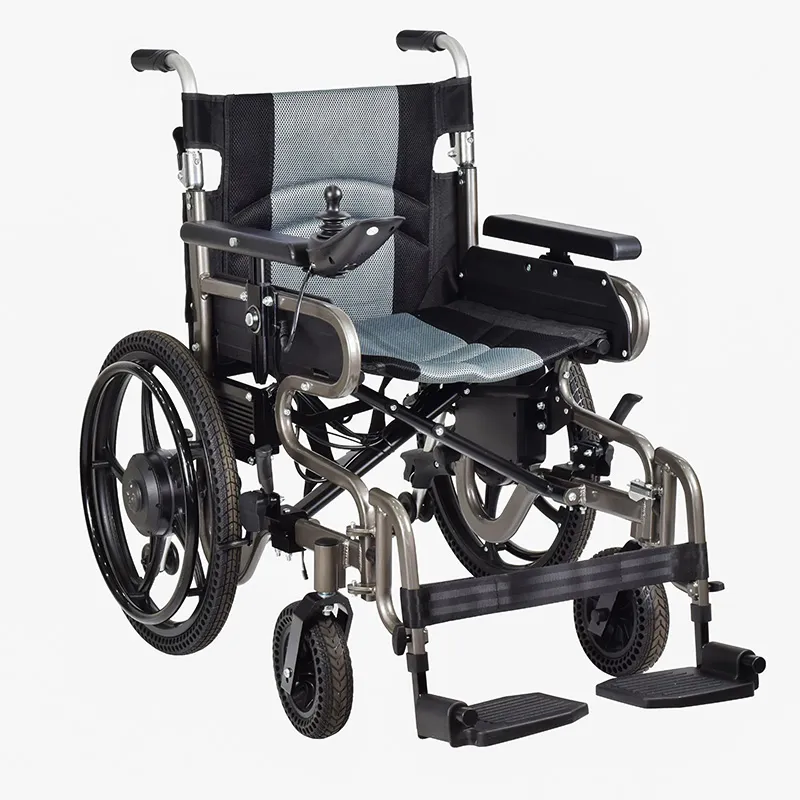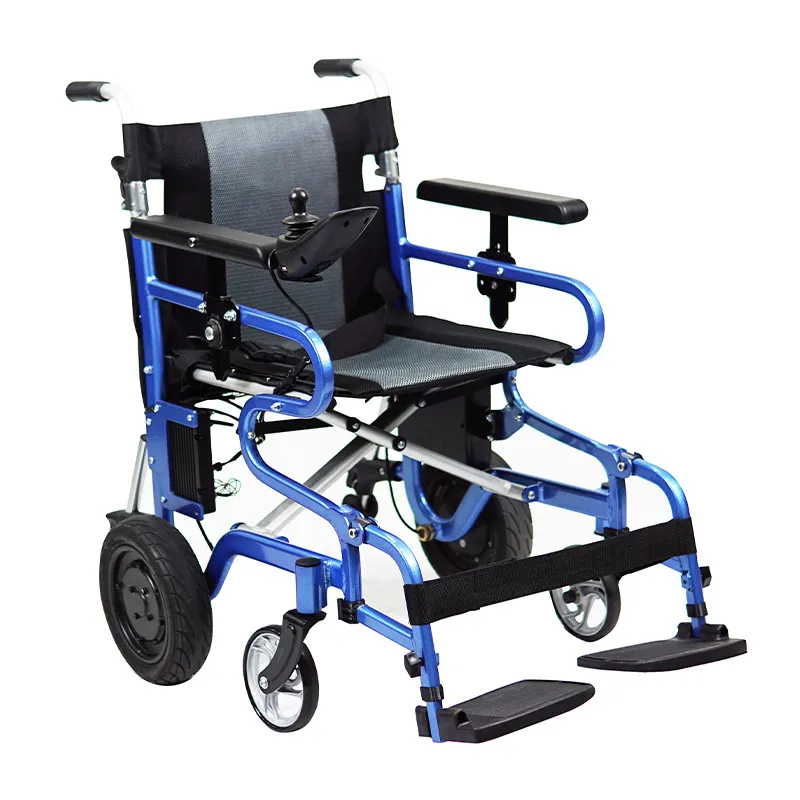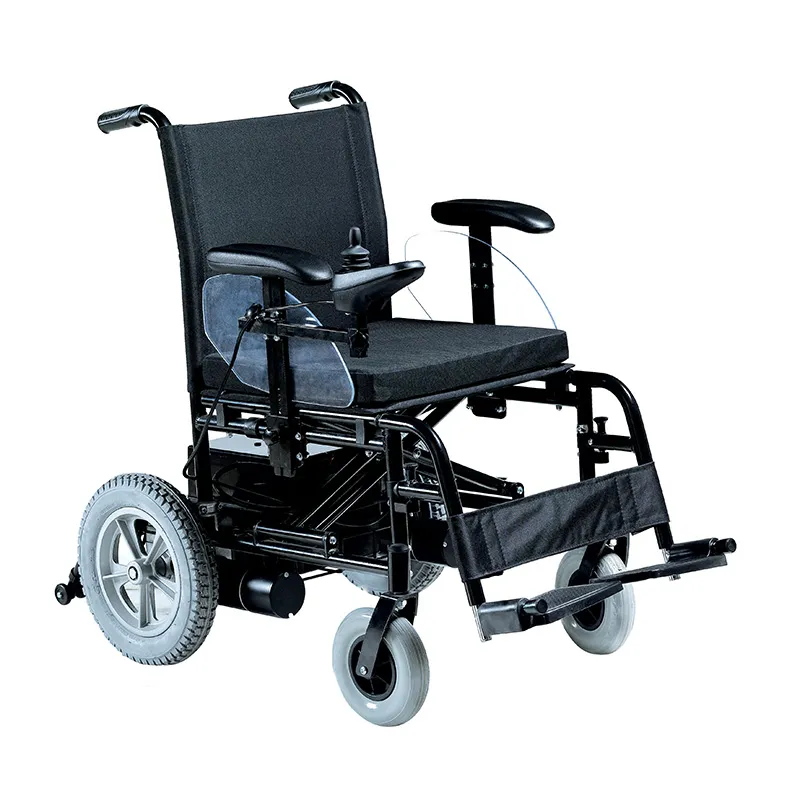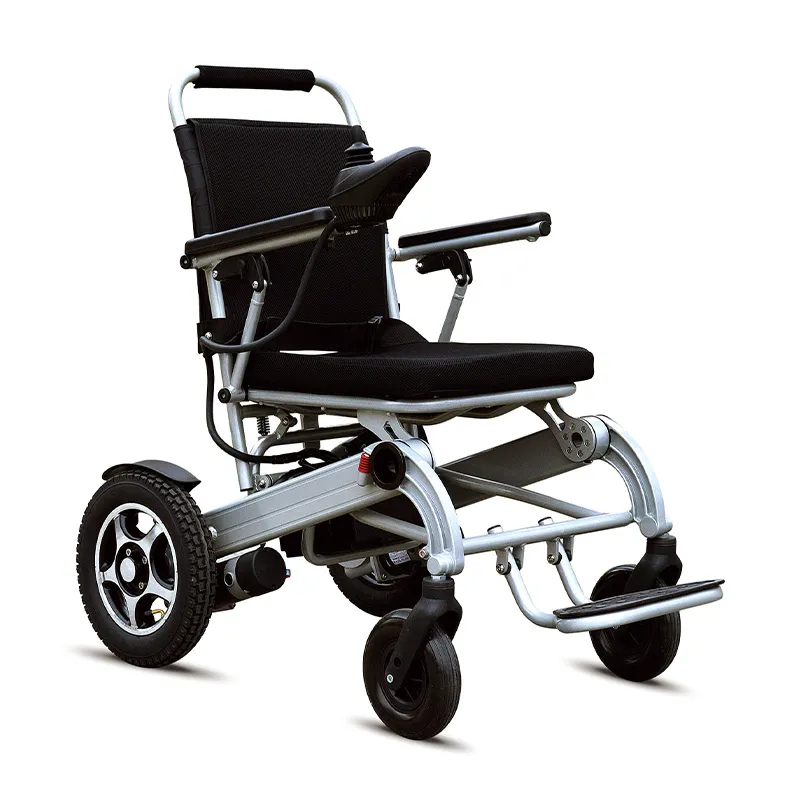
What is the battery life of electric wheelchairs?
2024-07-23 15:30
The energy consumption and battery life of power wheelchairs have always been the focus of users. What is the energy consumption of power wheelchairs? What about the battery life? These issues are related to users' daily use and travel plans.
This article will explore these issues in depth, provide detailed analysis and practical guidelines, and help users better understand and use electric wheelchairs.

What is the energy consumption of electric wheelchairs?
The energy consumption of electric wheelchairs usually refers to the electrical energy consumed by electric wheelchairs during operation. The size of energy consumption depends on multiple factors such as the motor power, battery capacity, load conditions, and use environment of electric wheelchairs.
1. Motor power
The motor is the core component of the power wheelchair, and its power directly affects the energy consumption. Generally speaking, the motor power of electric wheelchairs is between 200W and 500W. The greater the power, the higher the energy consumption, but it can also provide stronger power and faster speed.
●Low-power motor (200W-300W): Suitable for lightweight electric wheelchairs, with low energy consumption but weak power, suitable for indoor use or relatively flat roads.
●Medium-power motor (300W-400W): Suitable for medium-sized power wheelchairs, with medium energy consumption and moderate power, suitable for a variety of indoor and outdoor environments.
●High-power motor (400W-500W): Suitable for heavy-duty and all-terrain power wheelchairs, with high energy consumption but strong power, suitable for complex terrain and long-distance travel.
2. Battery capacity
Battery capacity is usually measured in ampere-hours (Ah). The larger the capacity, the longer the endurance of electric wheelchairs, but it also means higher energy consumption. The battery capacity of common electric wheelchairs is between 20Ah and 60Ah.
●Small-capacity battery (20Ah-30Ah): Suitable for lightweight and indoor electric wheelchairs, with low energy consumption and moderate endurance.
●Medium capacity battery (30Ah-45Ah): suitable for medium-sized electric wheelchairs, with medium energy consumption and good endurance.
●Large capacity battery (45Ah-60Ah): suitable for heavy-duty and all-terrain electric wheelchairs, with high energy consumption, but strong endurance, suitable for long-term and long-distance use.
3. Load conditions
The load conditions of powered wheel chairs include the weight of the user, the weight of the items carried, etc. The heavier the load, the higher the energy consumption of the powered wheel chairs. Therefore, when purchasing and using powered wheel chairs, the appropriate model and configuration should be selected according to actual needs.
4. Use environment
The use environment also has a great impact on the energy consumption of electric wheelchairs. Flat roads have lower energy consumption, while complex terrains such as ramps, rugged roads, and sand will increase energy consumption.

What is the range of electric wheelchairs?
The range of electric wheelchairs refers to the maximum distance that can be traveled after a single charge. The endurance is affected by many factors, including battery capacity, motor power, load conditions, use environment and driving habits.
1. Battery capacity and endurance
Battery capacity is the most important factor affecting endurance. Generally speaking, the larger the battery capacity, the longer the endurance. For example, a battery with a capacity of 20Ah usually has an endurance of about 10-15 kilometers; a battery with a capacity of 40Ah has an endurance of up to 20-30 kilometers; a battery with a capacity of 60Ah has an endurance of up to 35-50 kilometers.
2. Motor power and endurance
The motor power is inversely proportional to the endurance. The greater the power, the stronger the power, but the higher the energy consumption, and the endurance is correspondingly reduced. Therefore, when choosing electric wheelchairs, it is necessary to find a balance between power and endurance.
3. Load conditions and endurance
The heavier the load, the higher the energy consumption of the electric wheelchairs and the lower the endurance. For users who are heavier or need to carry heavy objects, electric wheelchairs with larger battery capacity should be selected to ensure sufficient battery life.
4. Usage environment and battery life
Flat roads have lower energy consumption and longer battery life; while driving on slopes, rough roads or sand, energy consumption increases and battery life decreases. Therefore, users should try to choose flat roads when using power wheelchairs to extend the battery life.
5. Driving habits and battery life
Driving habits will also affect the battery life of power wheelchairs. Good driving habits such as smooth driving, avoiding sudden acceleration and braking, and rationally planning driving routes can effectively reduce energy consumption and extend the battery life.

Actual case analysis
In order to better understand the energy consumption and battery life of electric wheel chairs, the following are analyses of two actual cases:
Case 1: Electric wheel chairs used indoors
Ms. Zhang is a 65-year-old retired teacher who mainly uses electric wheel chairs at home and in the community. She uses a lightweight electric wheelchair with a motor power of 250W and a battery capacity of 24Ah. Ms. Zhang uses electric wheel chairs for about 2 hours a day, mainly on flat ground.
●Energy consumption analysis: Lightweight electric wheelchairs have low energy consumption, consuming about 250Wh (watt-hours) per hour. Calculated at 2 hours per day, the daily energy consumption is about 500Wh.
●Endurance analysis: With a battery capacity of 24Ah, the endurance is about 12-15 kilometers. Ms. Zhang's use environment is flat ground, with low energy consumption, and the actual endurance is within the expected range.
Case 2: Electric wheel chairs used outdoors
Mr. Li is a 40-year-old outdoor enthusiast who likes to use electric wheel chairs in parks and suburbs. He uses an all-terrain electric wheelchair with a motor power of 450W and a battery capacity of 50Ah. Mr. Li uses electric wheelchairs for about 4 hours a day, driving on different terrains, including flat roads, ramps, and grass.
●Energy consumption analysis: All-terrain electric wheel chairs have high energy consumption, consuming about 450Wh per hour. Calculated at 4 hours per day, the daily energy consumption is about 1800Wh.
●Battery life analysis: 50Ah battery capacity, the battery life is about 25-35 kilometers. Due to the complex use environment and high energy consumption, the actual battery life is slightly lower than expected, but it can still meet Mr. Li's daily use needs.

Summary
The energy consumption and battery life of powered wheel chairs are important factors that users must consider when choosing and using powered wheel chairs. Energy consumption is mainly affected by factors such as motor power, battery capacity, load conditions and use environment, while battery life is a comprehensive reflection of these factors.








